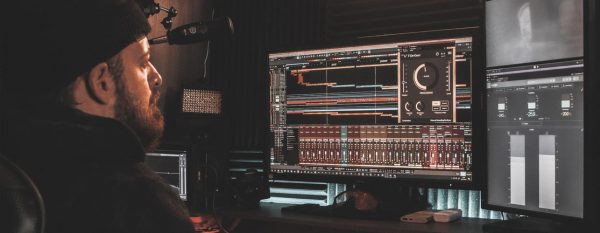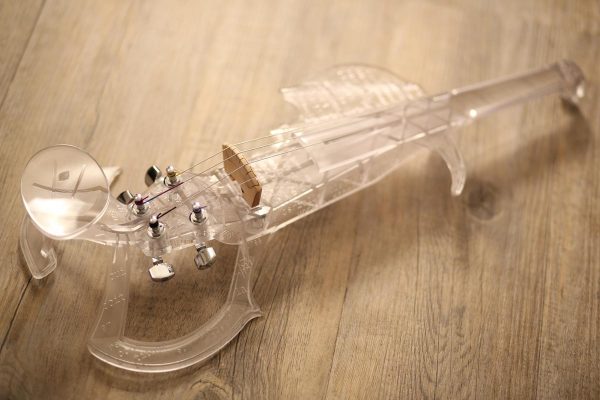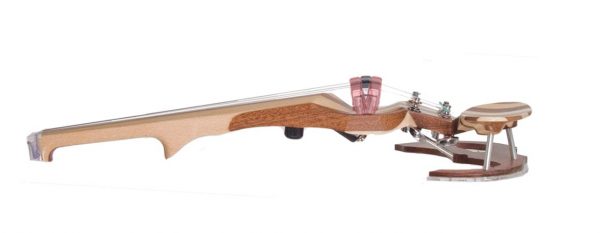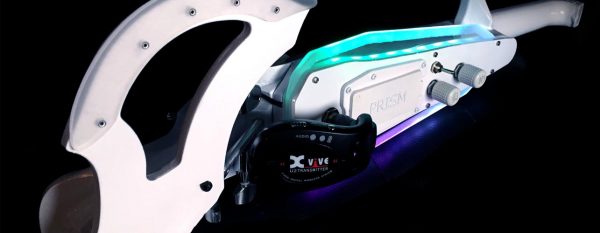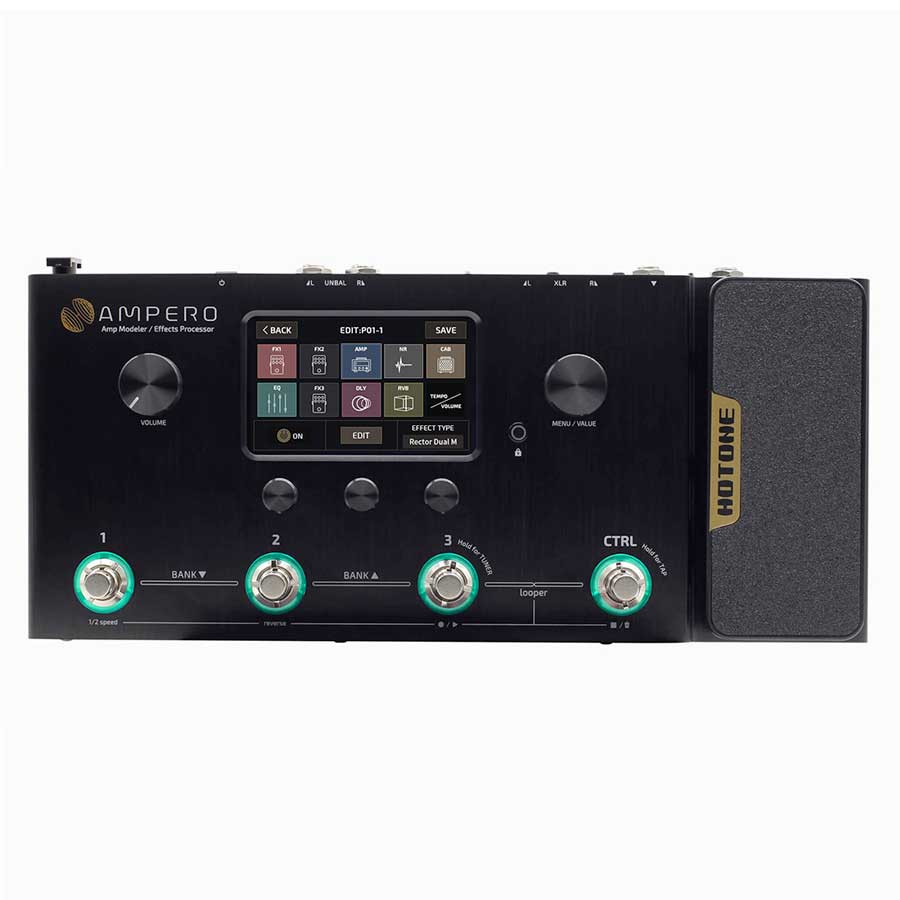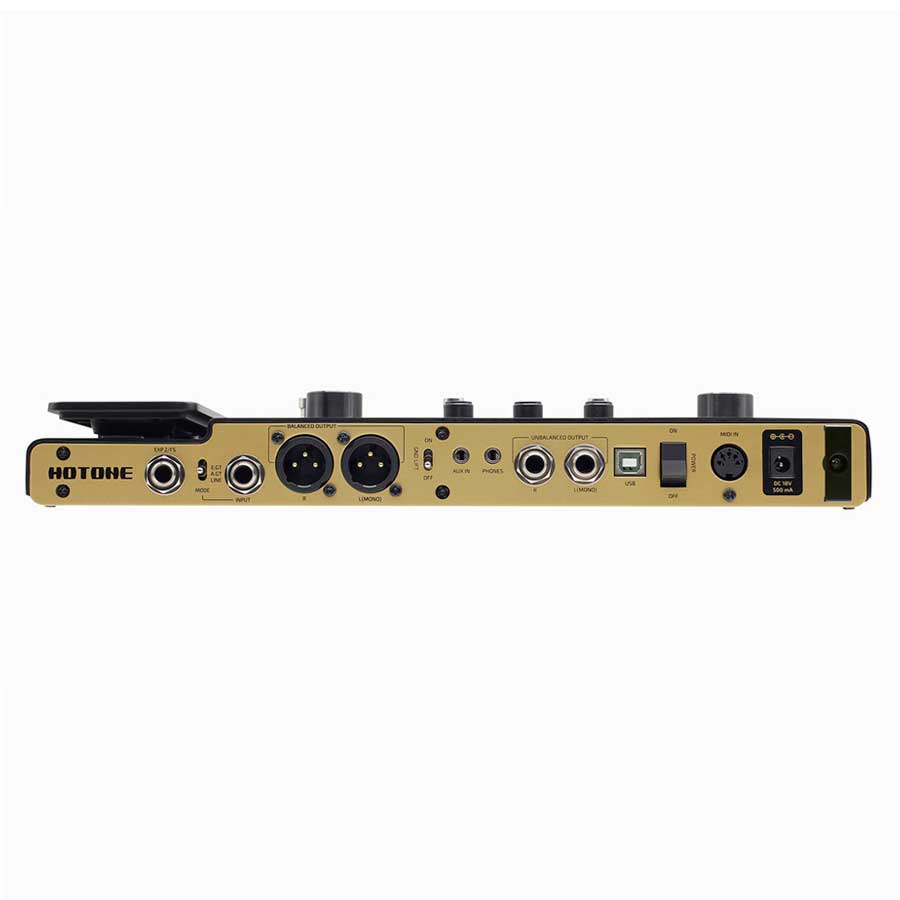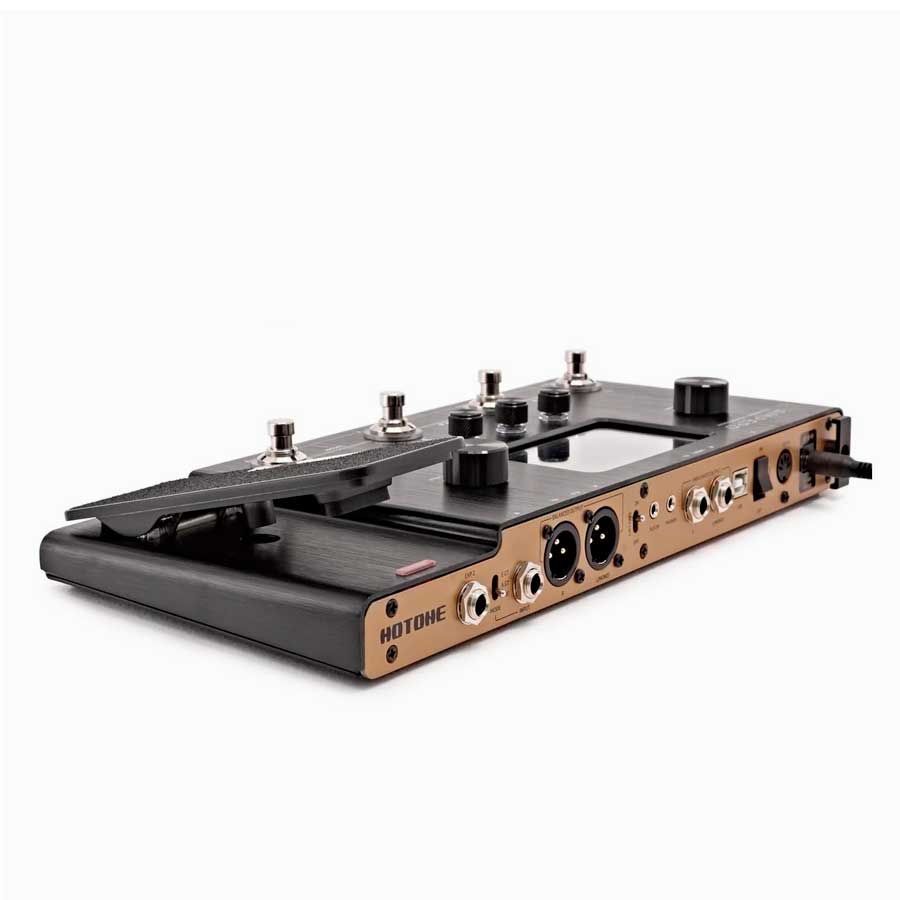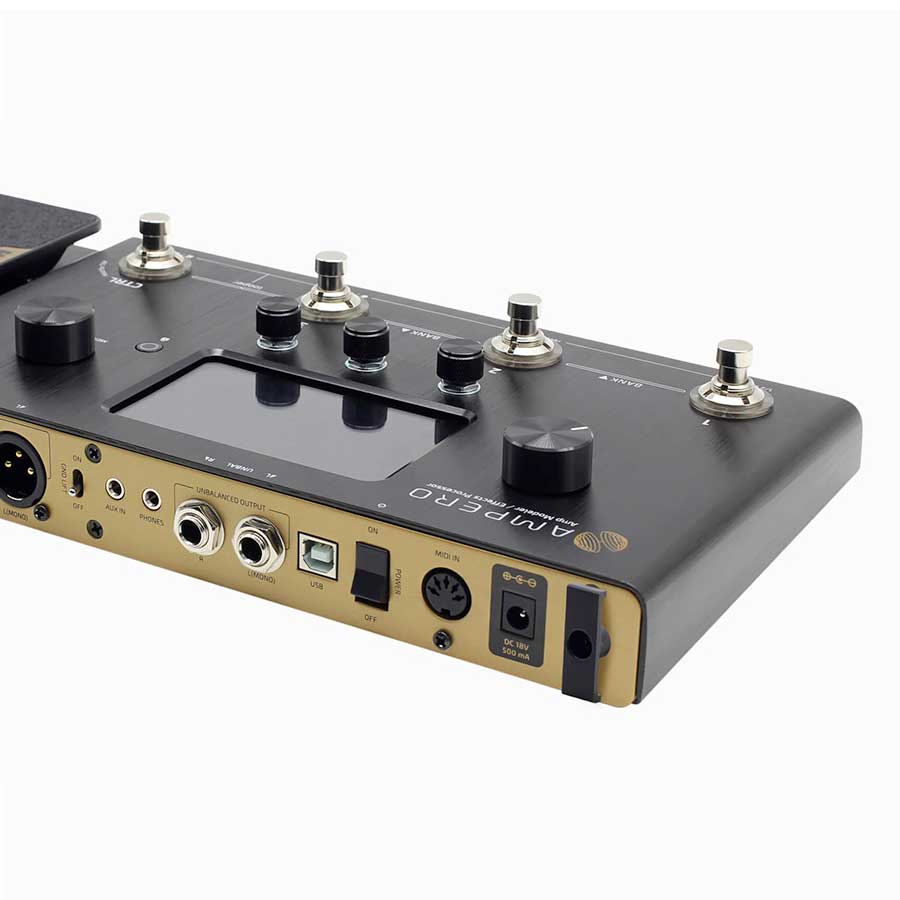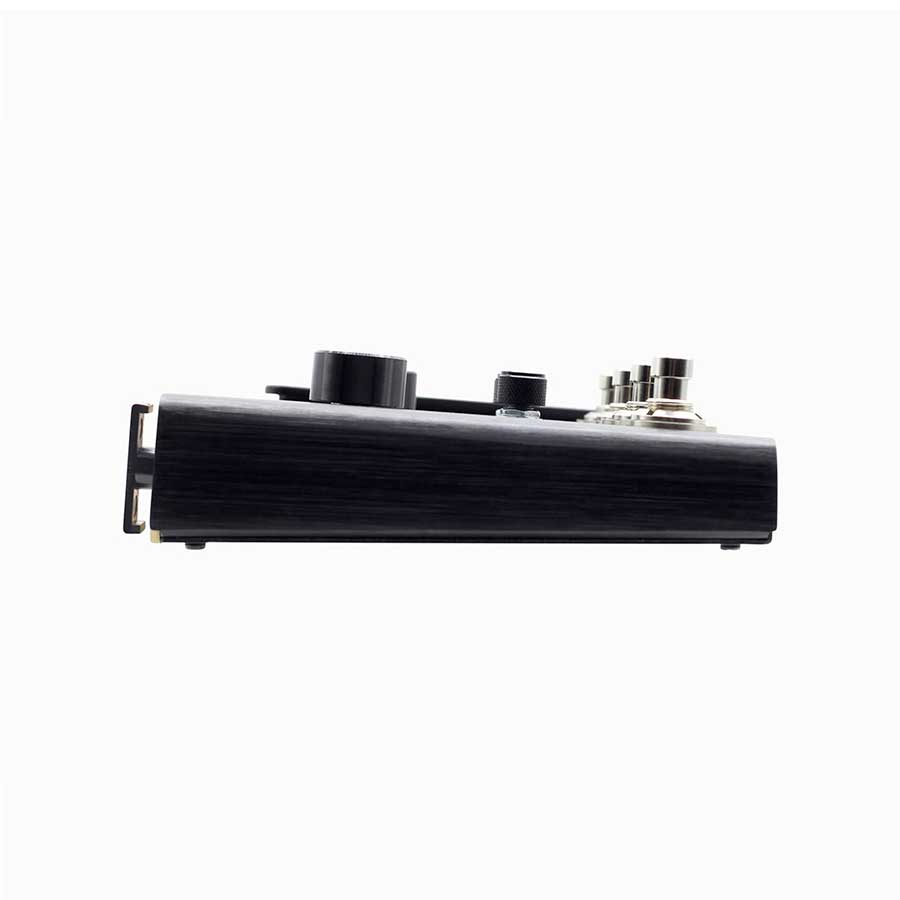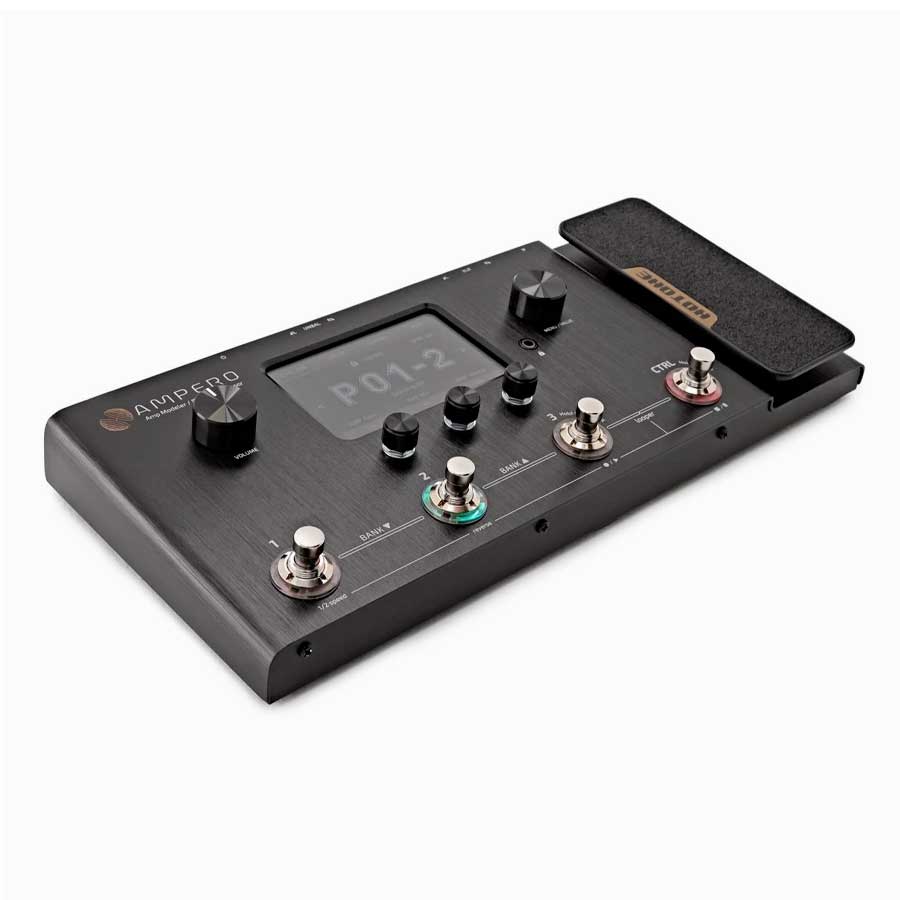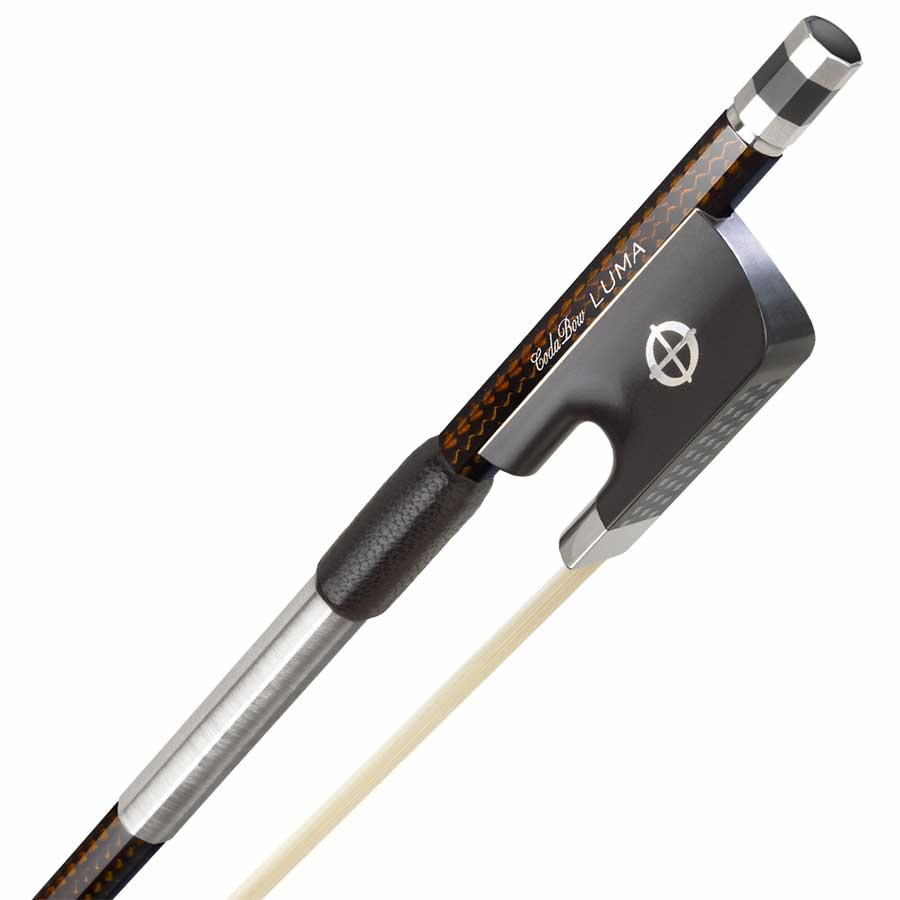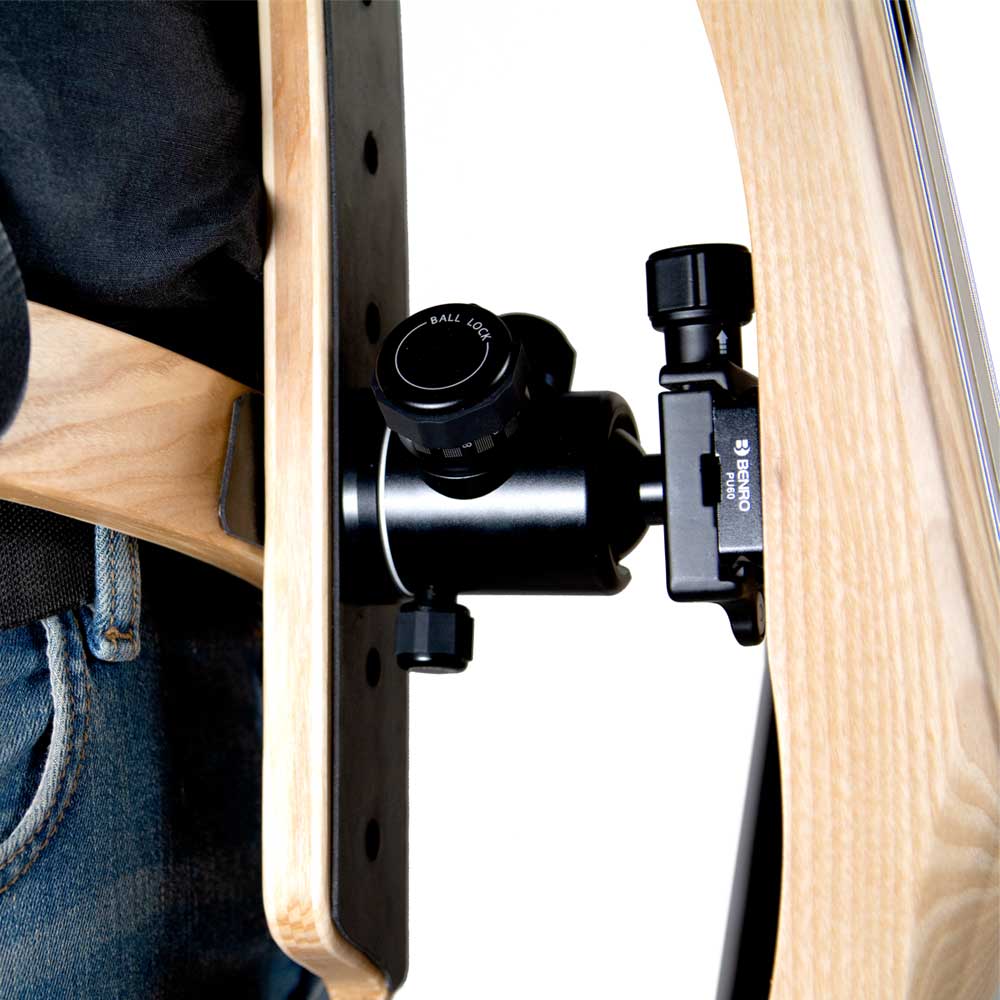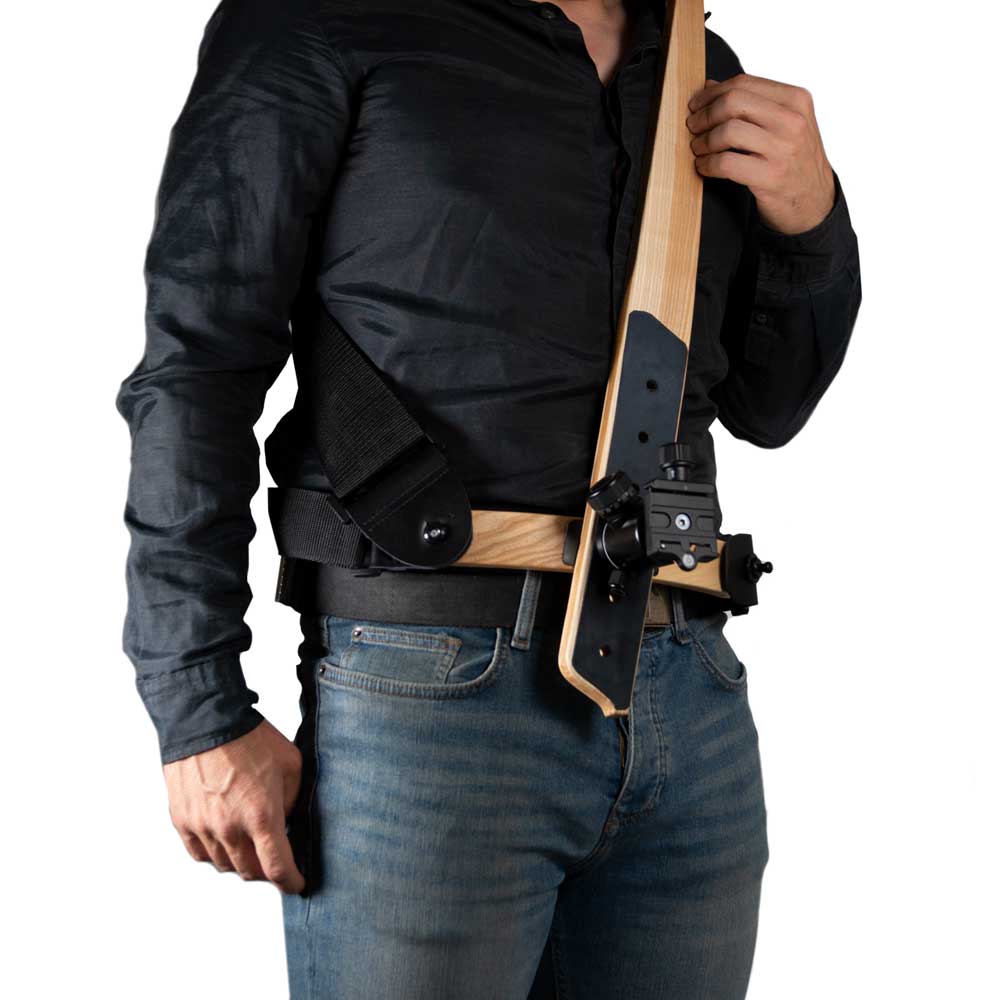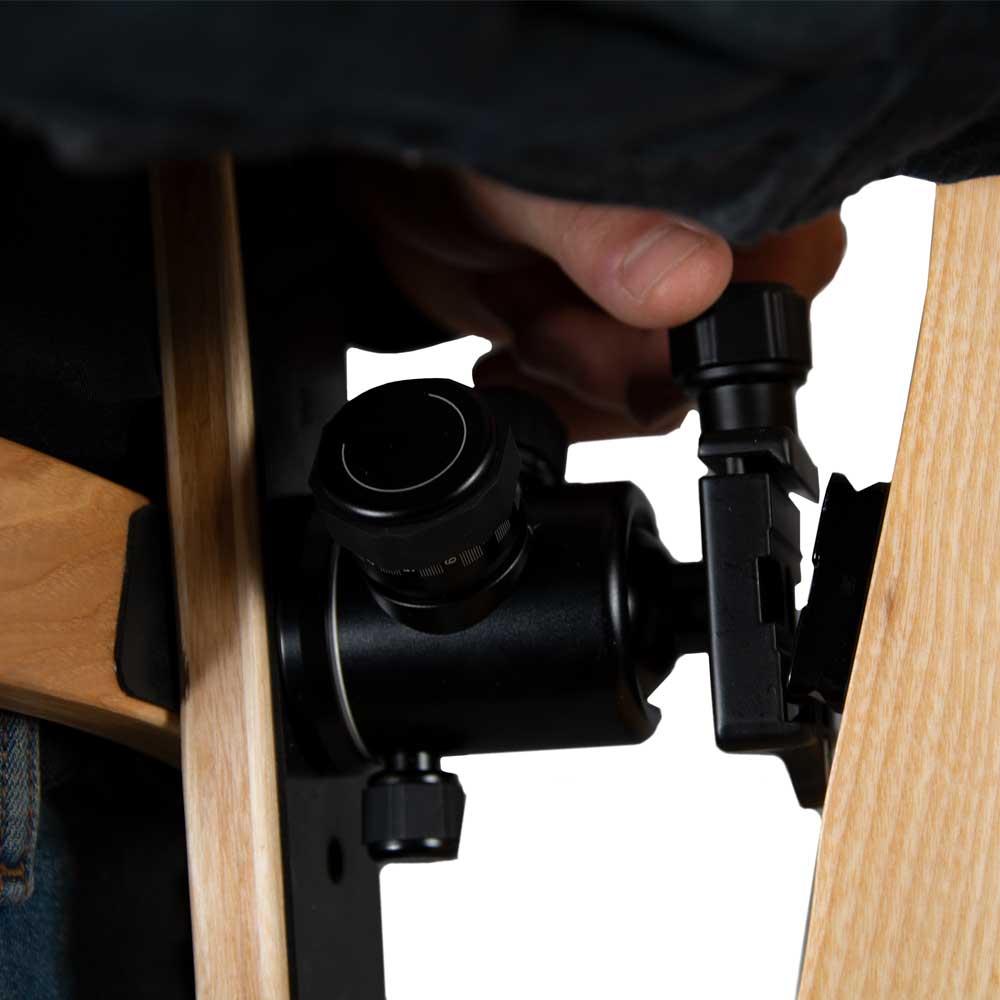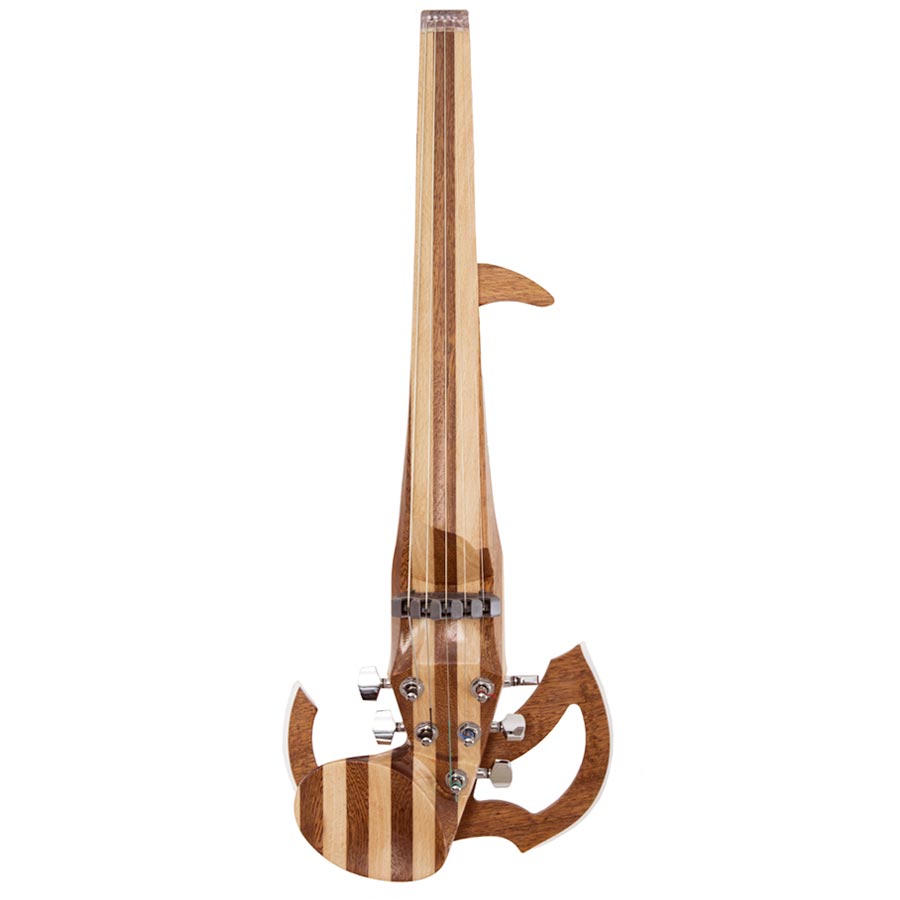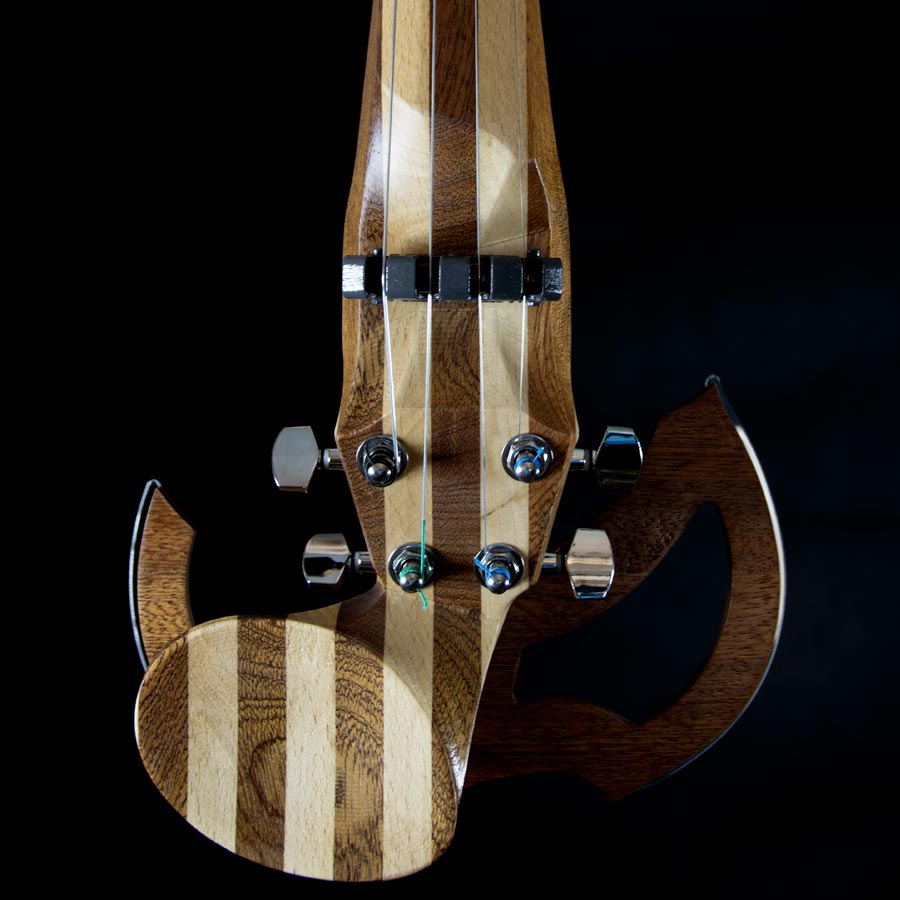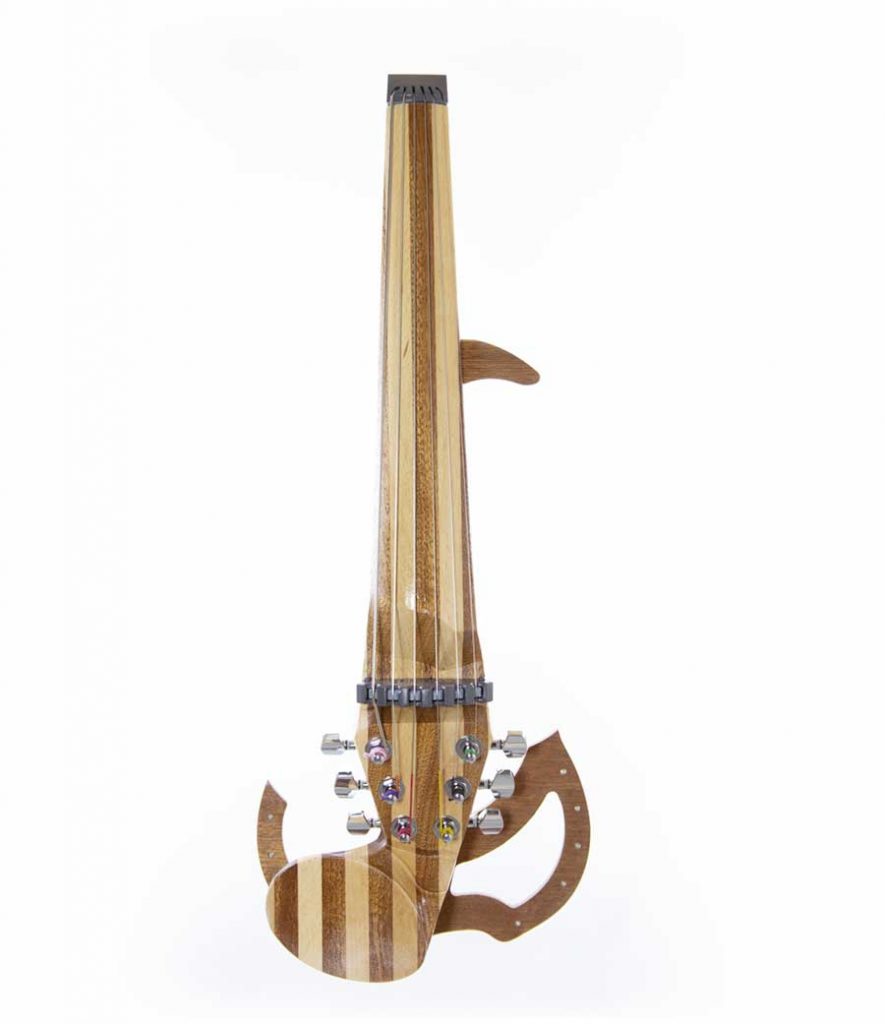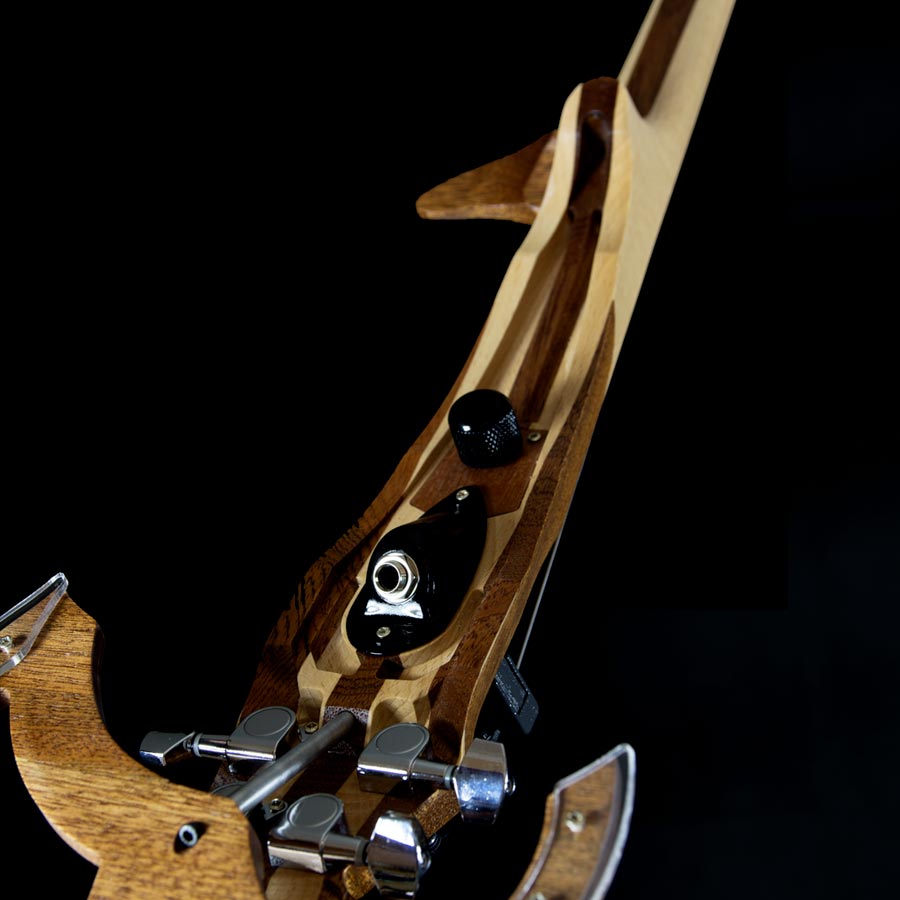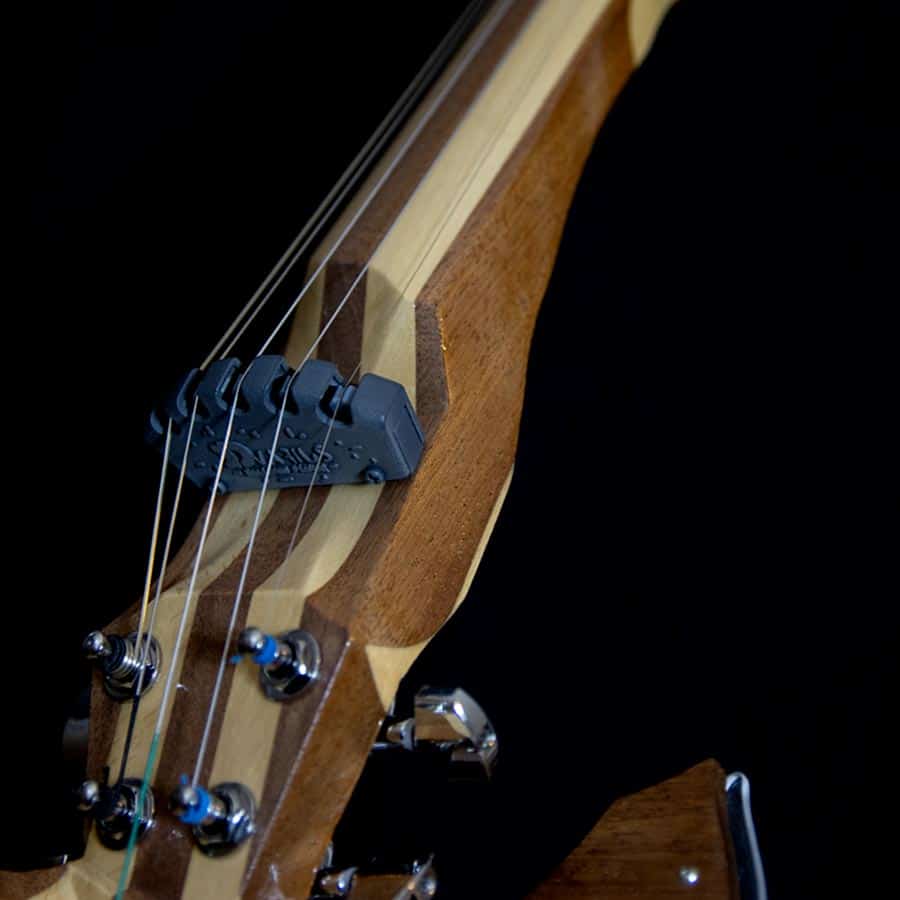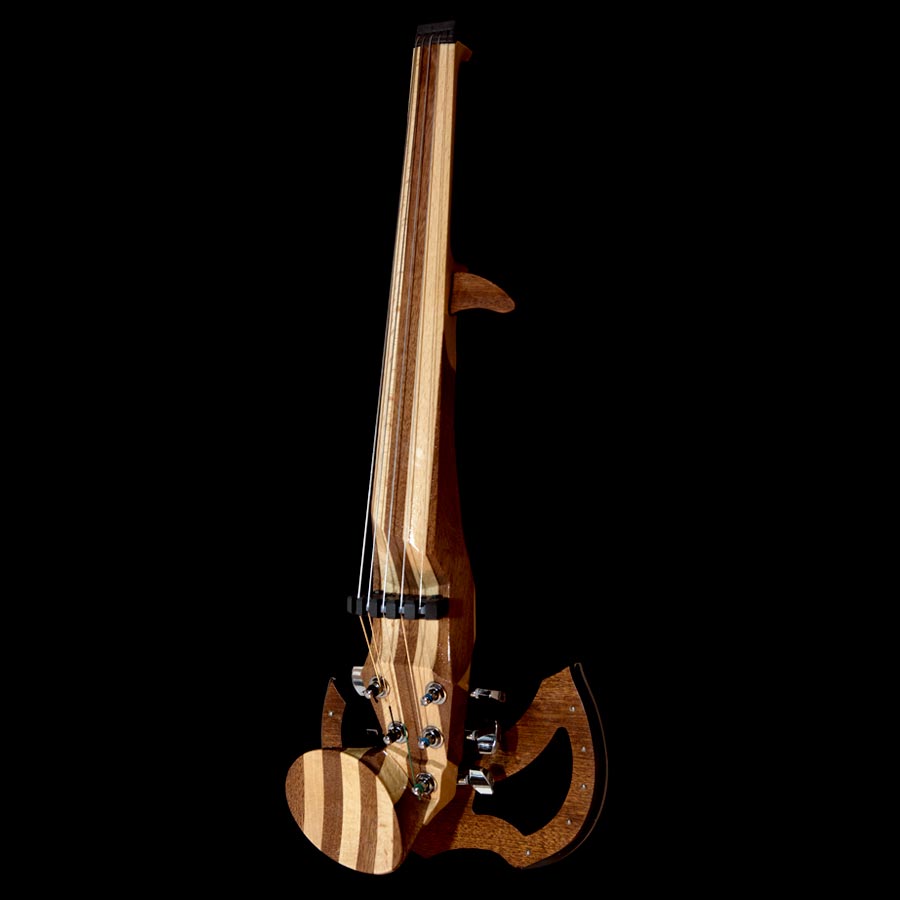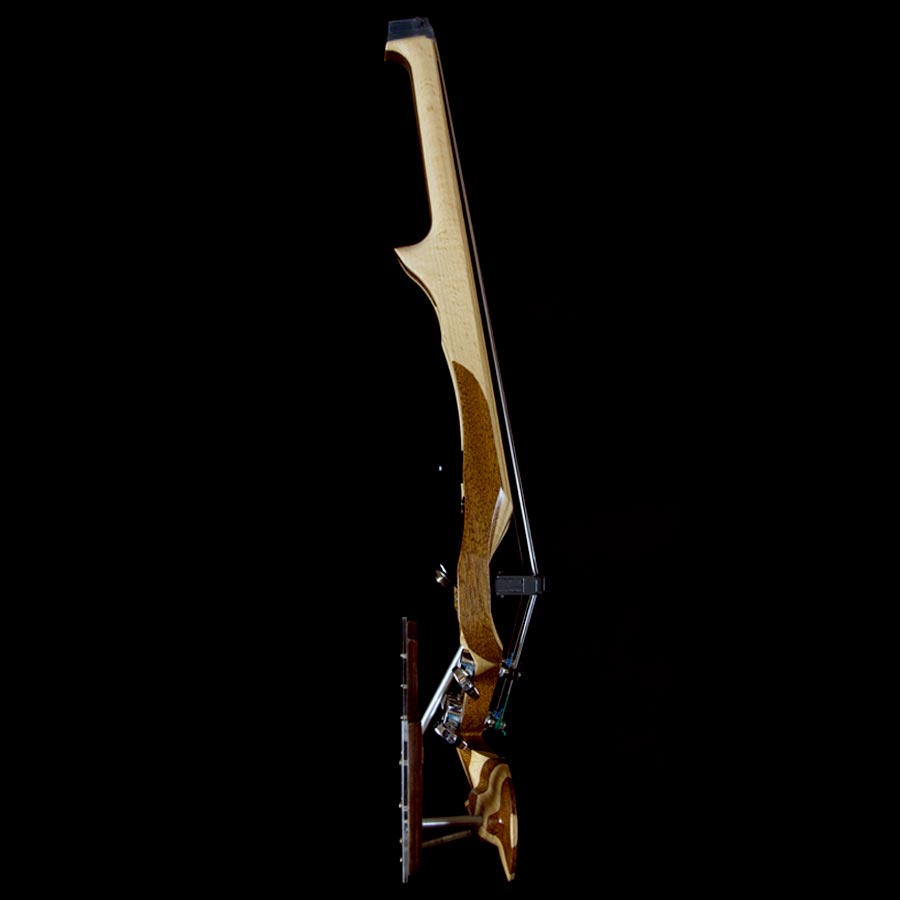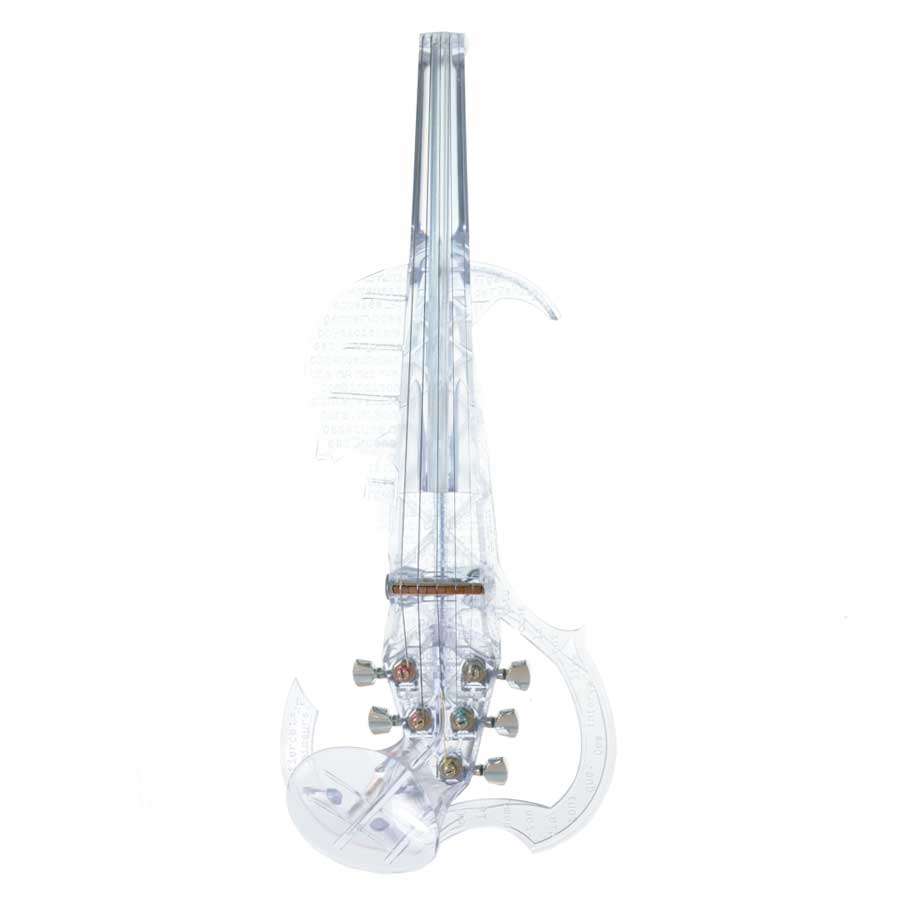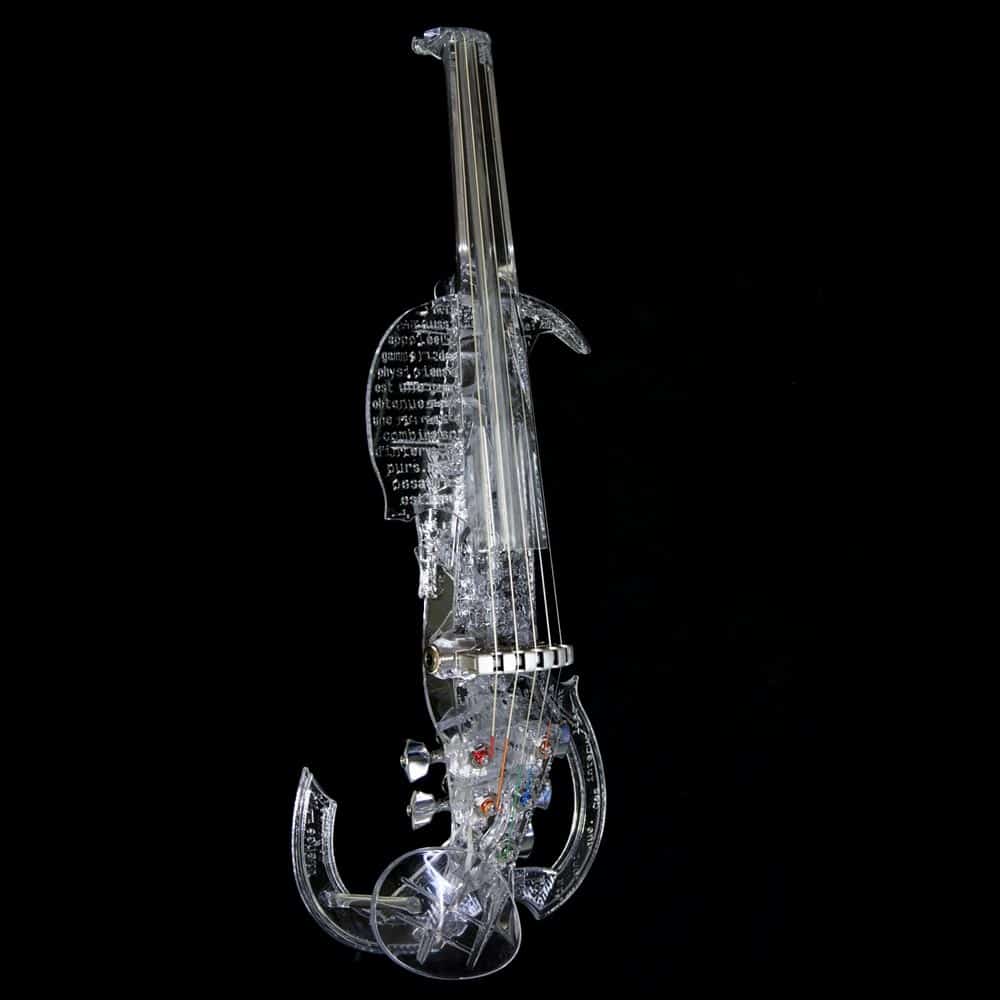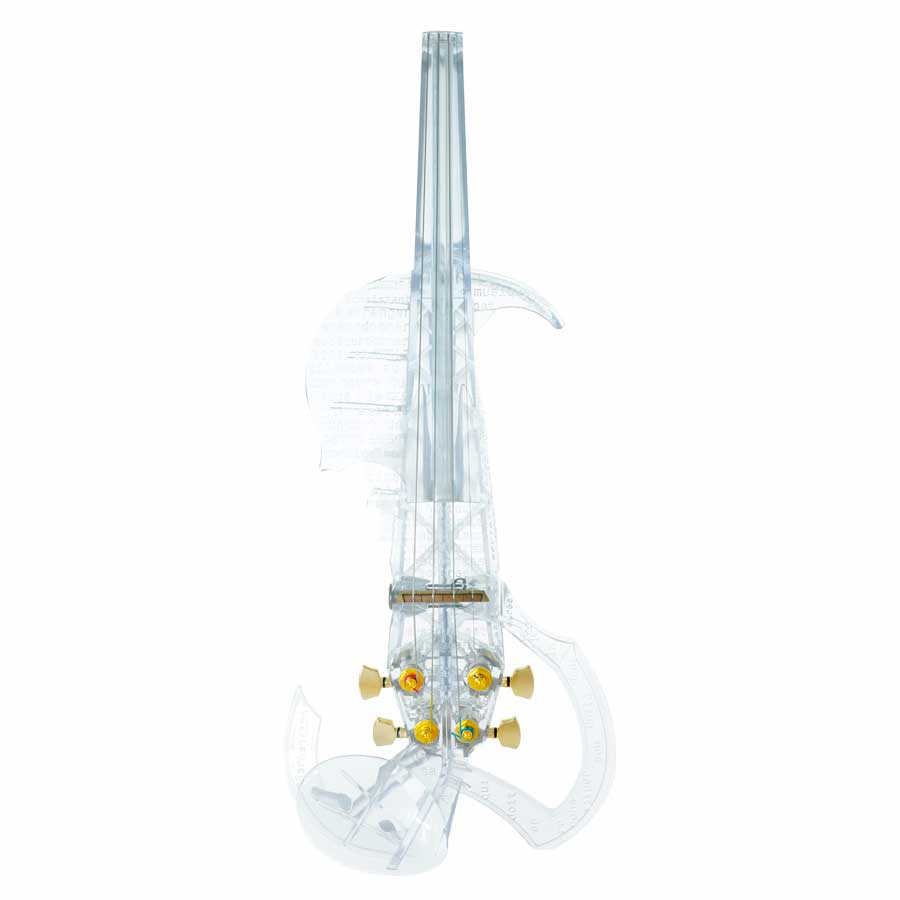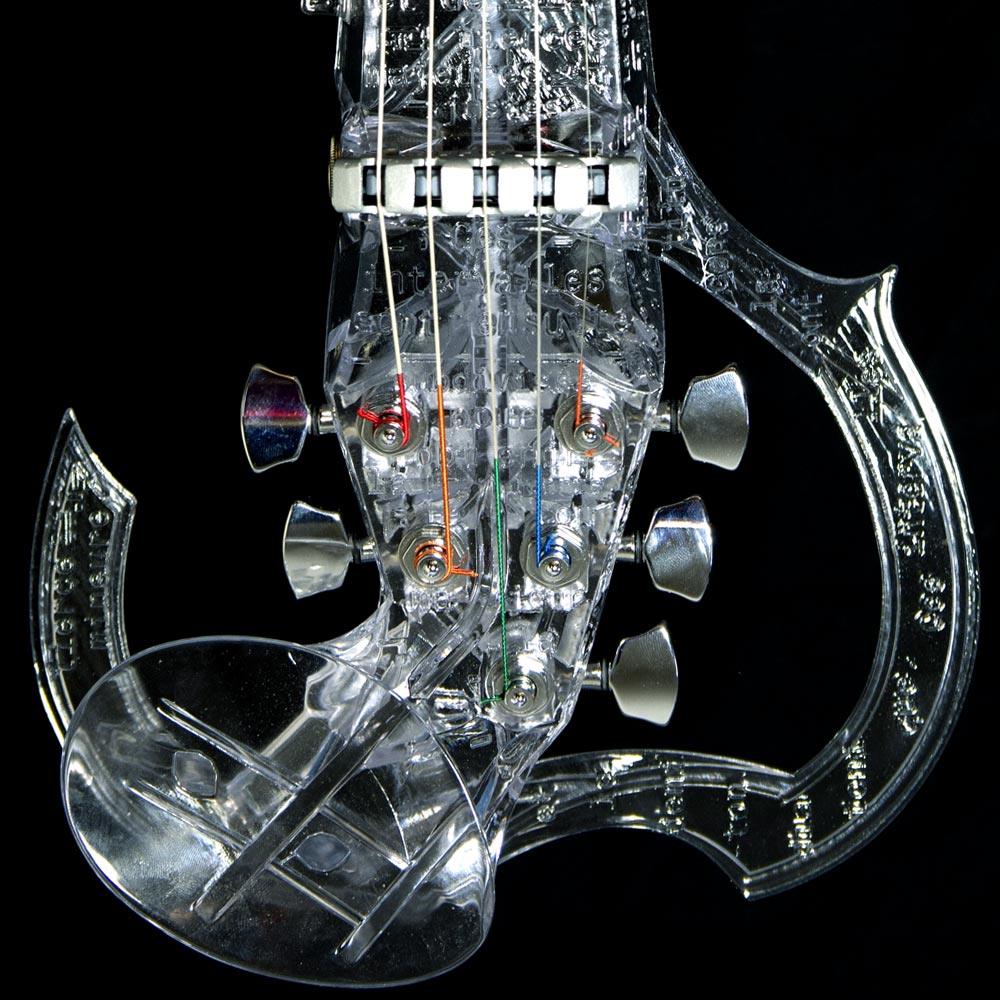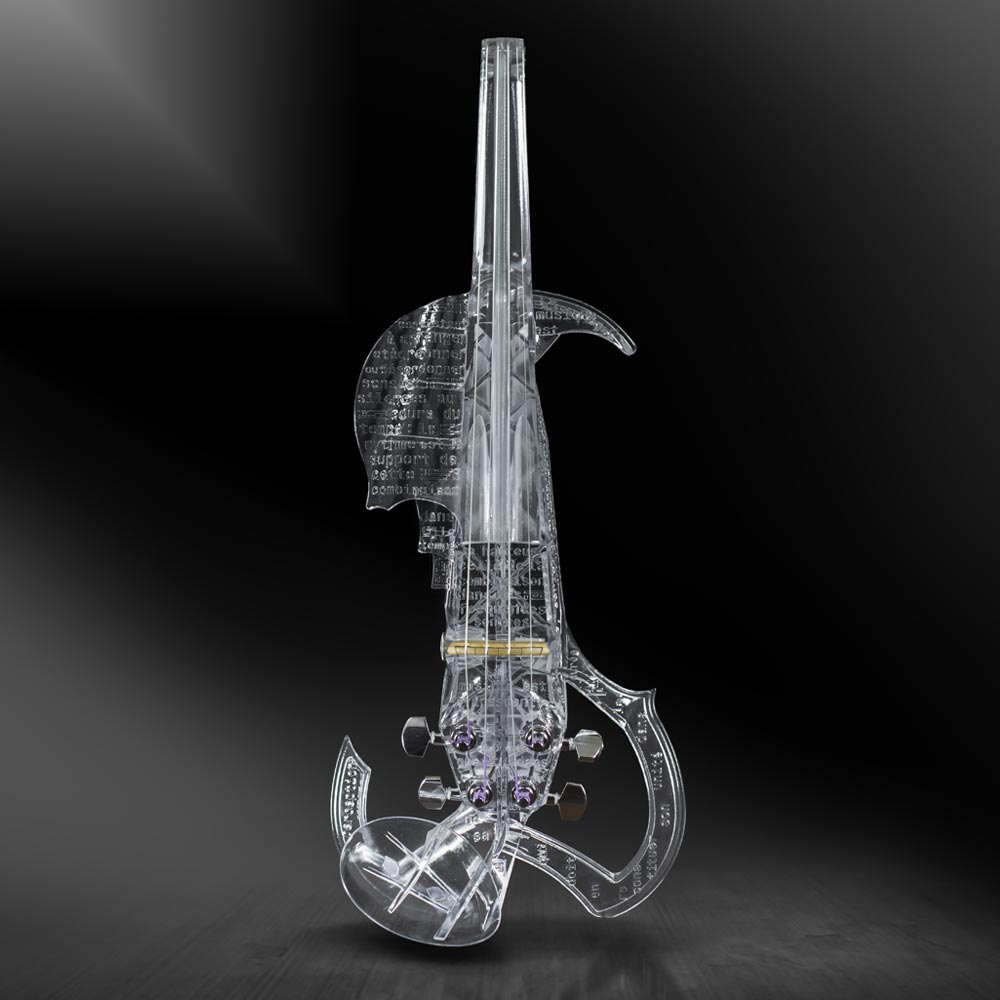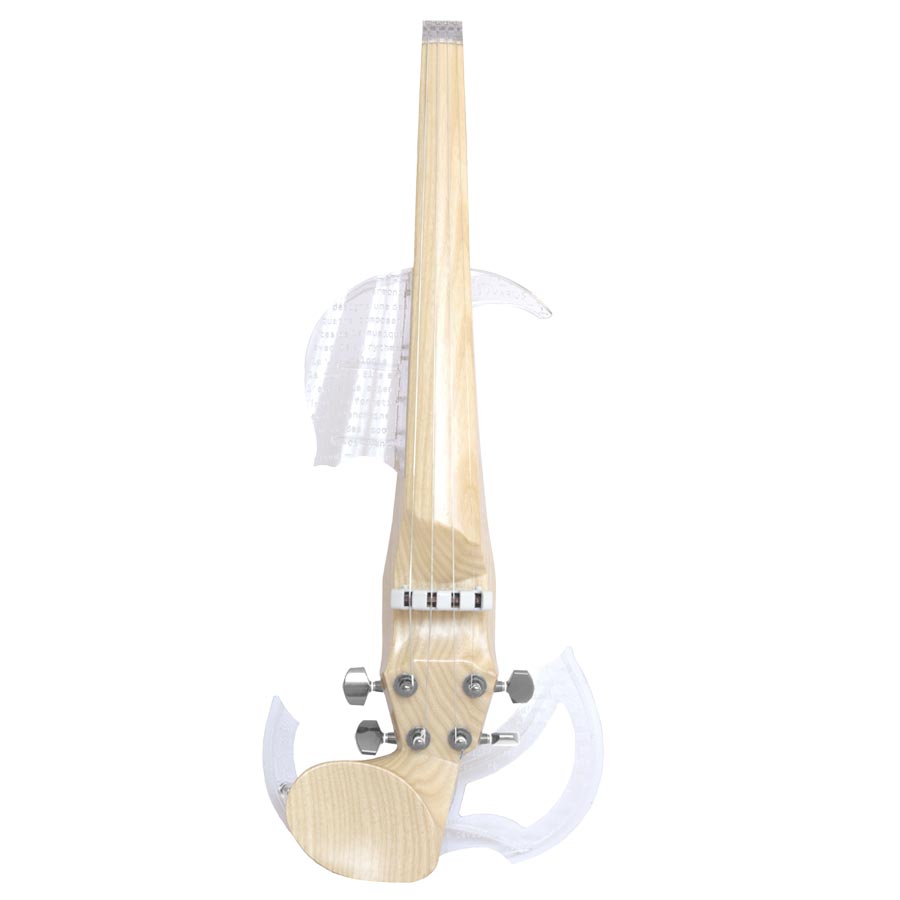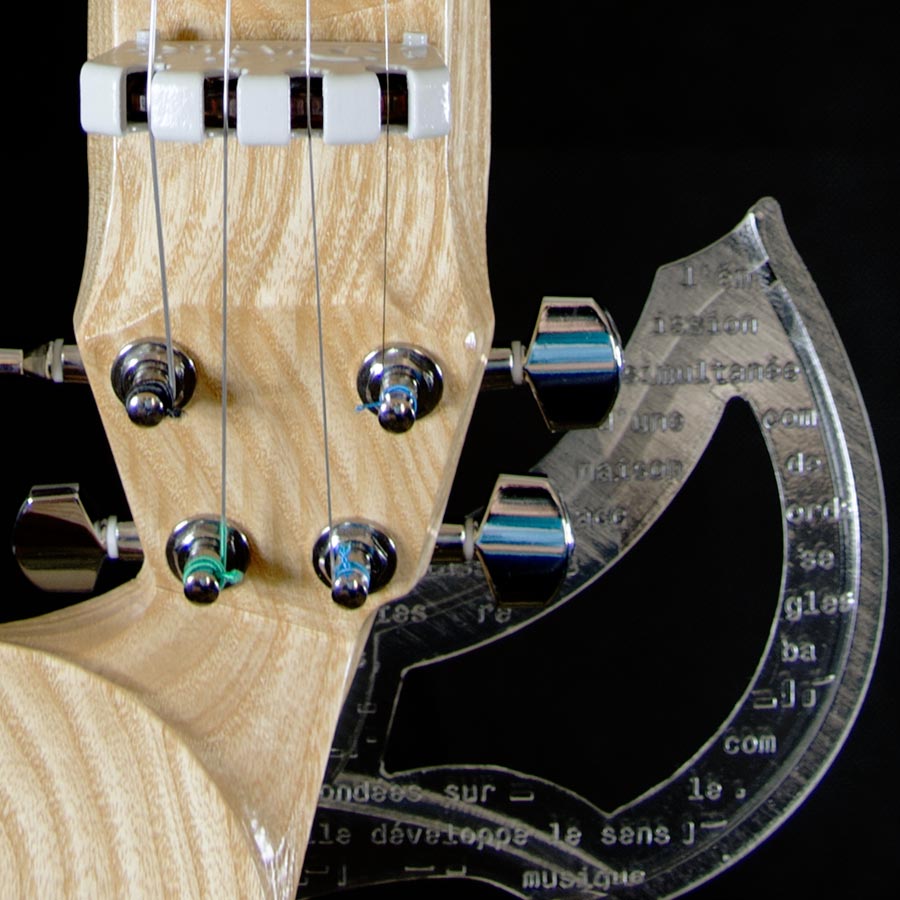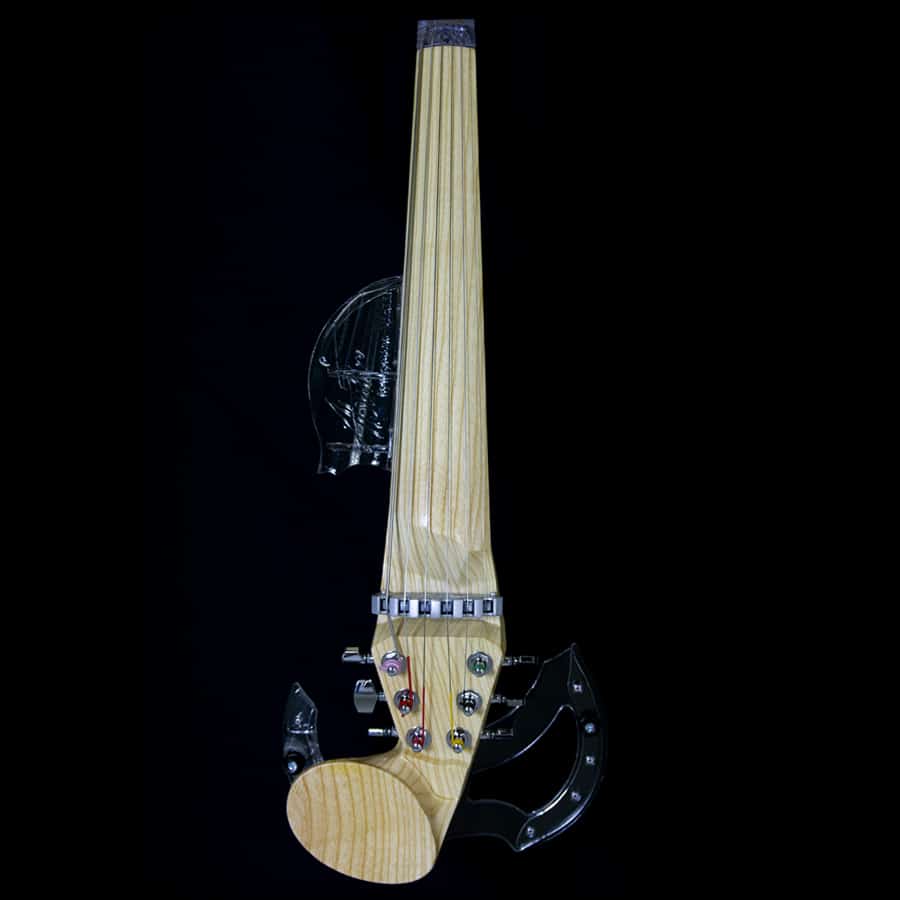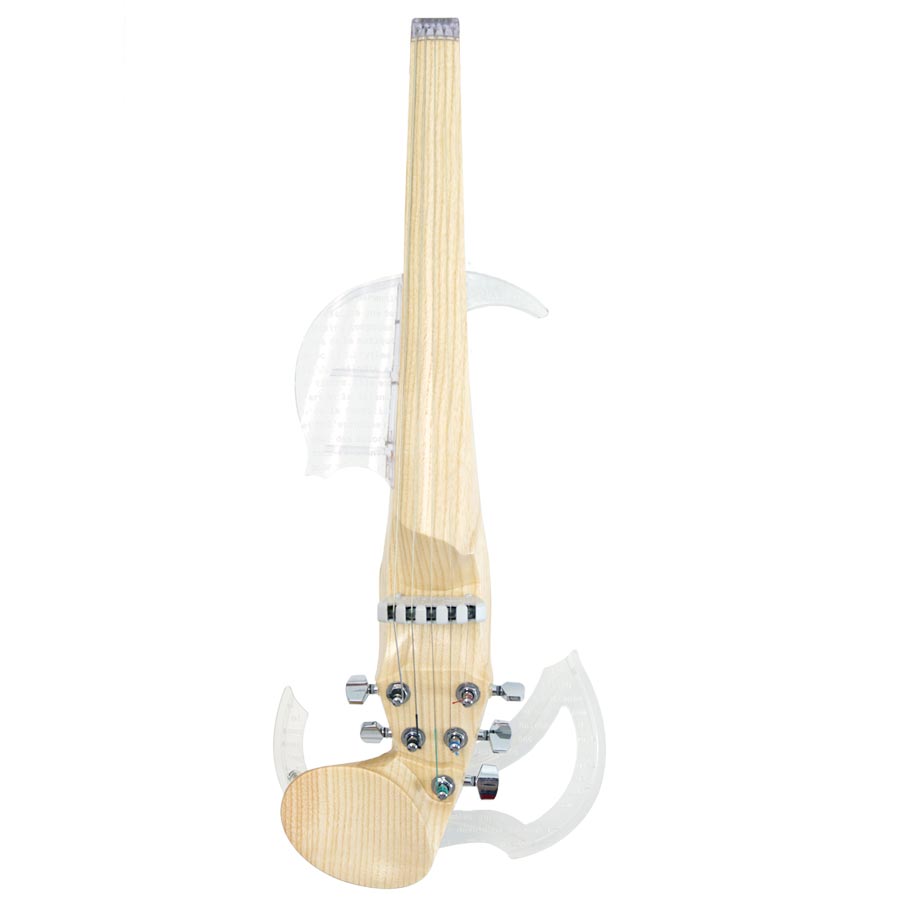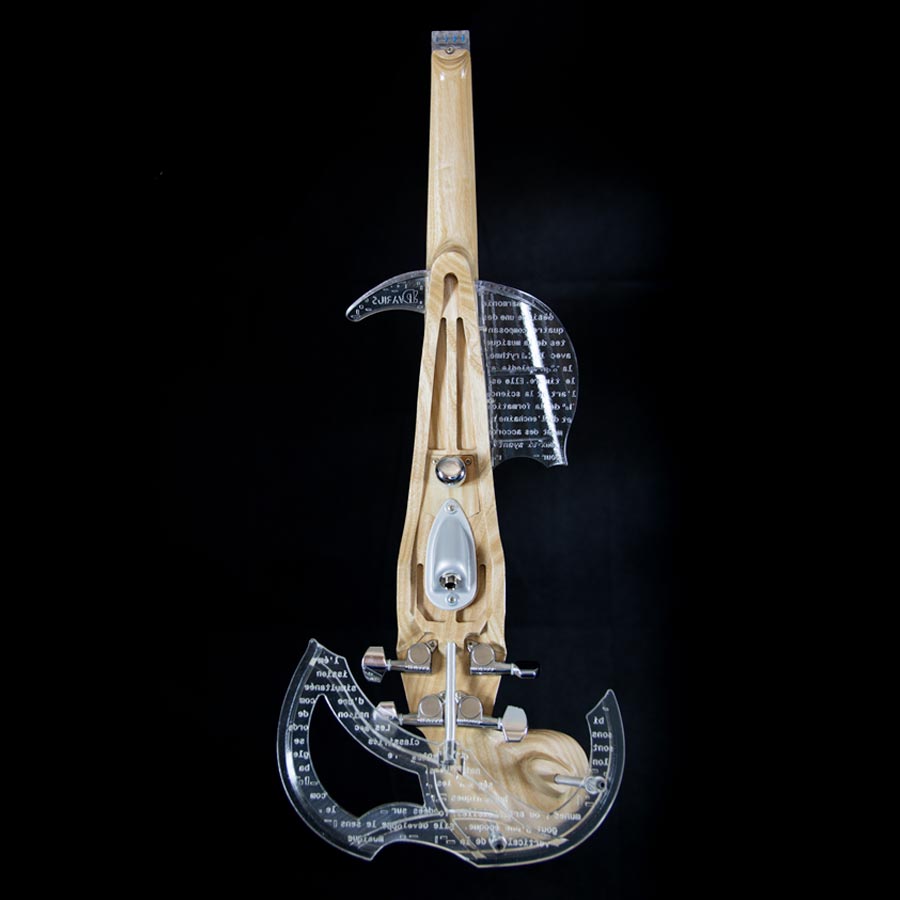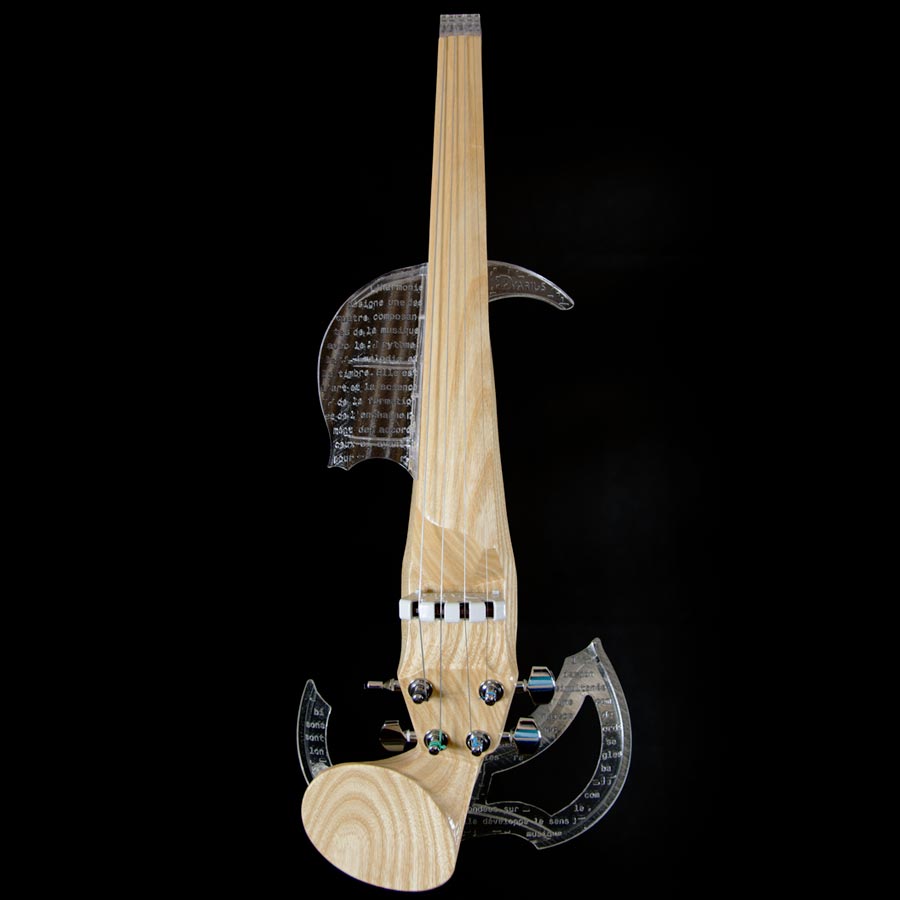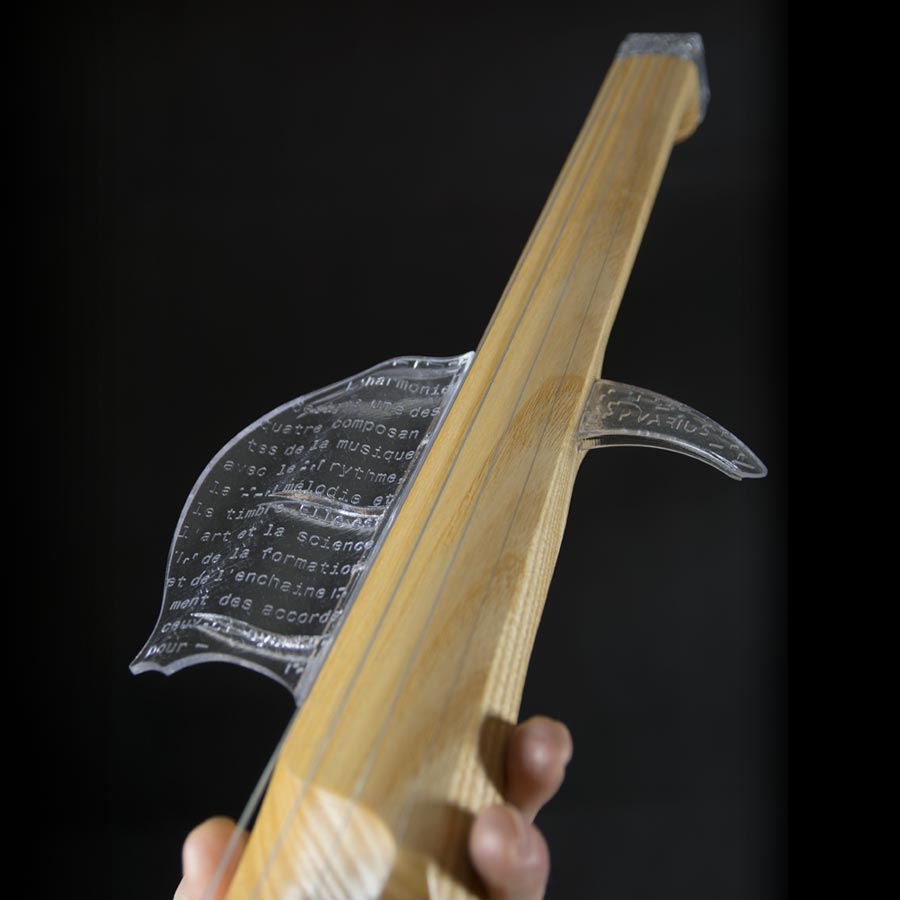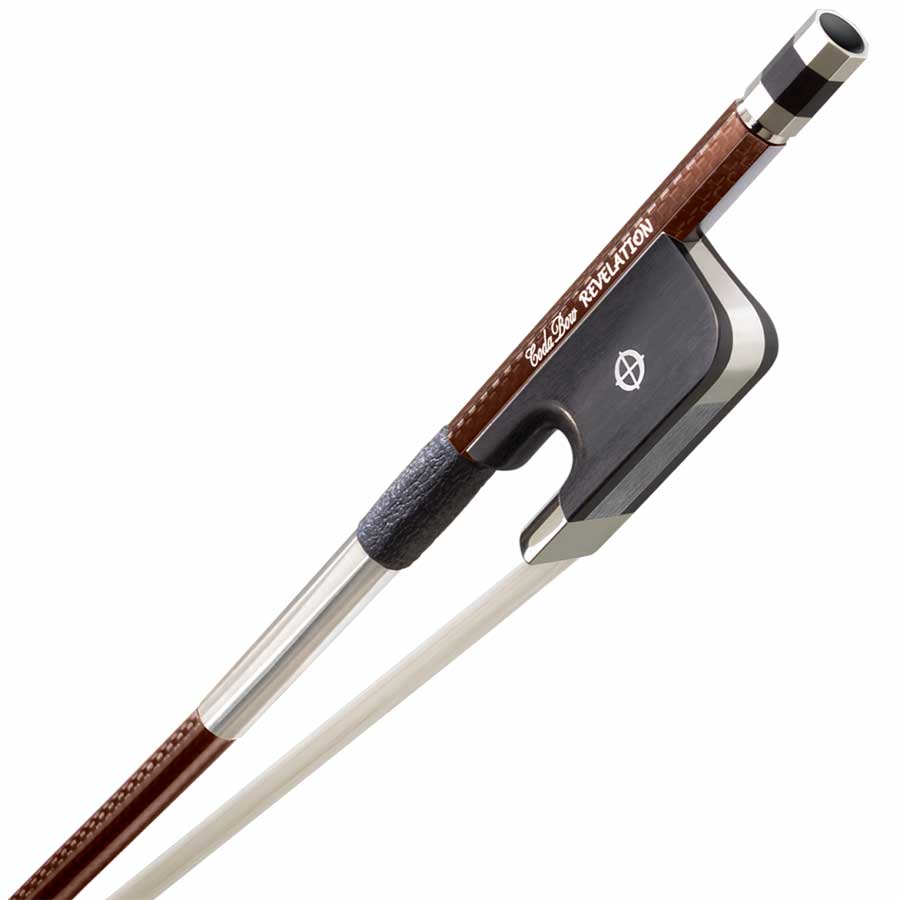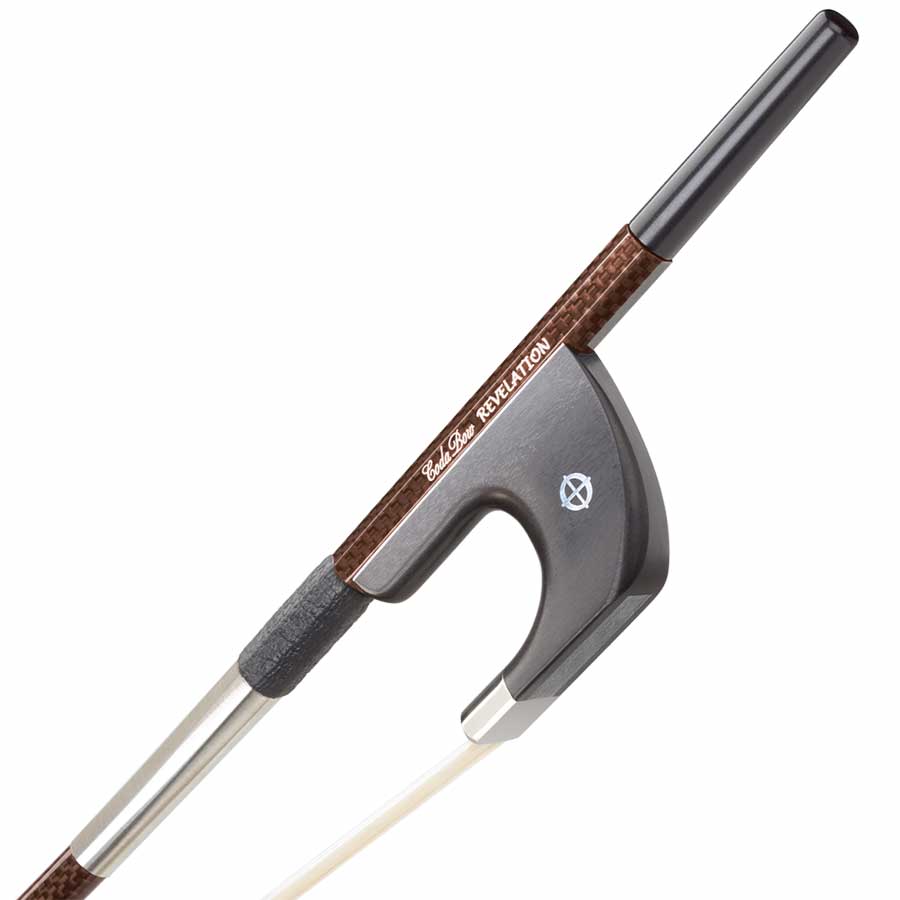Violinists often think that classical violin techniques can all be applied on an electric violin and to other music styles such as jazz or swing. Unfortunately, this may not always be true. Some playing techniques will work just fine, but others will definitely not. These techniques are not entirely useless; however, you must learn to adapt them to the style of music and the instrument you are playing.
The 4 factors that affect bowing technique
All violinists rely heavily on the nuances of sound produced by the bow. In fact, bowing allows bowed string players to express a very wide range of emotions.
These nuances are produced by the friction of the bow’s hair on the strings. They depend mainly on the force with which you rub the strings, but not exclusively.
There are 4 factors that must be considered when using a bow: its position, its inclination, its weight and the pressure exerted on the bow. Other subtleties are also worth taking into account, but each of them will always be related to these 4 factors. They have an impact on the sound your violin will produce.
-
- The pressure exerted on the bow
The pressure the violinist exerts on the bow will generate different sounds.
-
- The position of the bow on the strings
The position of the bow on the strings will change the color of the sound.
-
- The inclination of the bow
Bow inclination affects the number of hairs that will be touching the strings. The more hairs are in contact with the strings, the more powerful the sound will be!
-
- The distribution of the bow’s weight
The weight of the bow is not evenly distributed over its entire length. Its design does not provide it with a balanced mass. Most of the bow’s mass is concentrated at the frog of the bow. In fact, the farther away the hairs are from the frog of the bow, the more distant and lighter the sound will appear. Conversely, the closer the hairs are to the frog, the more present and powerful the sound will be. It is difficult to obtain a constant sound along the entire length of the bow.
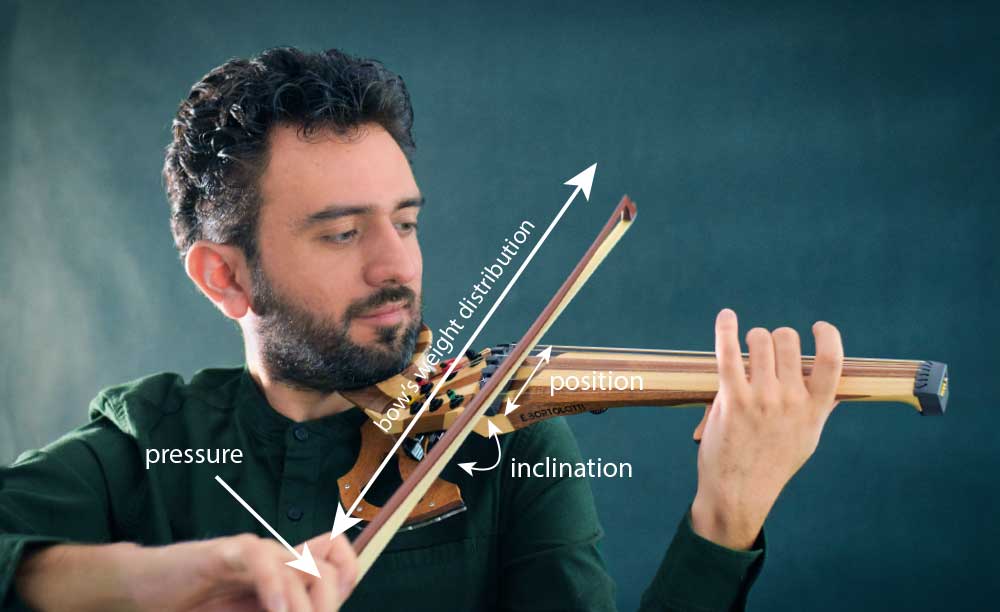
Keep in mind that some bows, especially carbon fiber bows, are designed to meet specific needs and to suit specific musical styles. Their weight distribution across the stick is designed to produce either a lighter or a more powerful sound. This simplifies certain bowing gestures.
Because of a lack of knowledge of the instrument, people often think that the most difficult part of playing the violin is mastering the movements of the left hand. However, the most challenging part of playing the violin is to control the right hand and its associated limbs which are responsible for handling the movements of the bow.
It is not easy to achieve a consistent draw over the entire length of the bow while keeping the same sound intensity. It is necessary to constantly evaluate the pressure that the limbs exert on the bow, while also taking into account the impact of the weight on this pressure.
These 4 factors illustrate the difficulty involved in learning a bowed string instrument such as the viola or the violin. Each player must learn to recognize the sounds produced by the combination of these four factors. There are dozens of possibilities not to mention several other factors such as those related to the bounce of the bow!
How these factors have an impact on the electric violin
Before we start, here is a brief reminder of the different types of amplification available for electric and classical violins. The sound generating system of an electric violin and that of an acoustic violin have very little in common.
The electric violin uses an “electro-mechanical” system to translate the vibrations of the strings into an electrical signal. They are then amplified by a device, for example an amplifier. The acoustic violin, on the other hand, uses its sound box to naturally amplify the vibrations of the strings.
In classical violins, the 4 factors: pressure, position, weight and inclination all have a role in the resulting sound. In the electric violin, these 4 factors remain relevant. However, they will not have the same impact on the resulting sound as they would in a classical violin.
For example, pressure does not have the same impact. You may think that applying the same amount of bow pressure with your classical and electric violin will produce the same sound? Wrong! This is the most common mistake made by classical violinists when they start playing electric!
With an electric violin, there is no need to apply a lot of pressure on your strings to intensify their sound. Sure, by exerting more force, the strings will be subjected to stronger vibrations. But the pickup system used by your electric violin is not designed to absorb this level of vibration. It will quickly become saturated.
Very often, the sound obtained is the opposite of what was expected! The more you apply pressure to the strings, the more nasal and muffled the sound of your electric violin will be! Simply because by pressing, you are blocking the sensors which no longer play their role correctly.
It is possible to make nuances by exerting a stronger pressure on an electric violin, but they are not as important as with a classical violin. Each system will react differently. The ability to reproduce nuances via pressure depends on the number of sensors your electric violin has, their positioning, their quality, their responsiveness, etc.
This is why not every nuance you are used to achieve with your classical violin will properly be expressed with your electric violin. With an electric violin, there is no need to press harder on the strings. Keep a moderate pressure and the sound will improve. The lighter you play, the clearer and more audible the sound becomes…
Marie-Alix Grenier, one of our ambassadors, was pleasantly surprised by the pickup of the Equinox. Up until she tried her Equinox out, she didn’t think it was possible to create nuances using the pressure of the bow on an electric violin.
When we go to an event, we always identify those violinists who do not have an electric violin. It is an easy task! They press too hard on the strings to produce nuances of sound. Except that the sound turns out muffled and dull.
A common comment we hear is: “Electric violins sound bad! They don’t react to the pressure of the bow”. A lack of understanding of the instrument leads them to think like that. Of course, it can sound good, but you have to adapt yourself to the instrument’s characteristics!
How to adapt your bowing?
Ask any guitar player if they play an acoustic guitar and an electric guitar in the same way… They will answer that they are both guitars, but that the way they are played is relatively different. It’s the same for electric and acoustic bowed string instruments.
Do not play “hard”
This was explained earlier but it’s always good to bring it up again. When playing an electric violin, the harder you play, the worse the sound will turn out!
This rule also applies to the styles of music you play. If you want to groove with your bowed string instrument, you will not be able to “play it hard” as you usually do in classical music. To stand out in a jazz or swing solo, you have to play fast, be reactive and have presence! But if you want to play fast, you will have to play with smaller movements. It is very complicated to have speed and power at the same time. You will have to find the best balance between the two.
Analyze the playing style of Stéphane Grappelli, Jean-Luc Ponty or Didier Lockwood. Then compare their bowing style to the style of a proper classical violinist and you will see that they have almost nothing in common.
In the following video, we can see the late violinists Didier Lockwood and Stéphane Grappelli, and notice:
- A fast, light and responsive gesture whether it is with the left or right hand
- A great execution speed in each movement
- Short bow strokes using controlled pressure according to the music being played and the thrust does not really come from the arm but rather from the wrist. It’s quite hard to see it, because the camera shots don’t always show it, but try to reproduce their bowing speeds by using only your arm and you’ll understand that they use the wrist a lot.
- There are no long, intense bowing gestures like the ones used in classical music
- There are no attempts to use major nuances to produce a “hard” sound
Reduce the amount of length used by the bow
In classical music, we use the full length of the bow. In electric and contemporary music, this becomes less important, especially if you want to be more dynamic. The longer your bow strokes are, the less you will be able to follow the rhythm!
Your arm cannot generate an attack, it is too loose and unresponsive. Instead, play with a shorter length using your wrist and not just your arm. Your playing will be lighter and more fluid! The attack at the beginning of each movement depends on your right hand.
Identify your own bow movements
There are several bowing techniques that can be used on the violin: détaché, martelé, staccato, etc. It’s worth experimenting with different combinations to find the ones that work best for your electric violin and your playing style.
Movements requiring different bow pressure intensities are more complex to achieve, because, as explained above, the intensity applied will not be fully processed by an electric violin. It is also a matter of dynamics and execution speed.
On the other hand, techniques that involve the bouncing of the bow on the strings work very well. This is one of the reasons why we recommend using strings that have an interesting bounce when playing an electric violin.
There are also other interesting techniques such as the chop! Jonathan H. Warren and Tracy Silverman have co-written an article on how to use the chop to make your instrument groove. Tracy Silverman summarizes in a short paragraph techniques such as the chop:
What you’re shooting for is a pitch-free kind of noise, which will be different, depending on how percussively or lightly you are using your bow–from a nearly silent wisp to a gritty chug. There are many right answers. And keep in mind that most of those answers will not sound acceptable in classical music. However, they are not only acceptable, but necessary for grooves, trust me!
While these “noises” are not considered appropriate in classical music, in all other styles of music, who cares? Below you will find Jonathan’s short tutorial on how to master this bow movement.
Adapt your bowing technique
The perfect bow movement in classical music is one that starts at the arm, goes to the wrist and ends at the fingers. The objective is to obtain a coherence and a certain linearity in the movement in order to achieve the greatest possible discretion during the changes of the bow stroke.
To play jazz or rock, we often try to obtain more attack and presence at the beginning of the bow movement. For this, it is better if you forget the classical technique.
What body part do you think is capable of delivering a fast attack? It is not the arm, but the fingers, because they are the first in line and the most able to exert immediate pressure. The fingers are closest to the bow and can easily apply pressure on the strings to generate an attack.
This is a very common technique in jazz violin playing. We will start the movement from the fingers and move up to the arm. This is the opposite of what is taught in classical violin, where the arm concludes the movement rather than initiating it.
If you think about it, it’s perfectly logical since we are trying to obtain a sound that is completely opposite to what we do with the classical violin. We no longer want a discreet and coherent sound, but a dynamic and surprising one.
Jean-Luc Ponty explained to The Strad magazine that his solid technical background in classical music helped him enter the world of modern jazz.
Ponty followed his own ears. His classical training stood him in good stead, particularly, he says, his left hand: It helped me to approach any type of music I wanted: nothing was too intricate for me because I had that solid technical background.
Although his classical training for the left hand was useful, one understands by deduction that, conversely, he had to work a lot on his right hand.
He then gives some details on what helped him to play jazz.
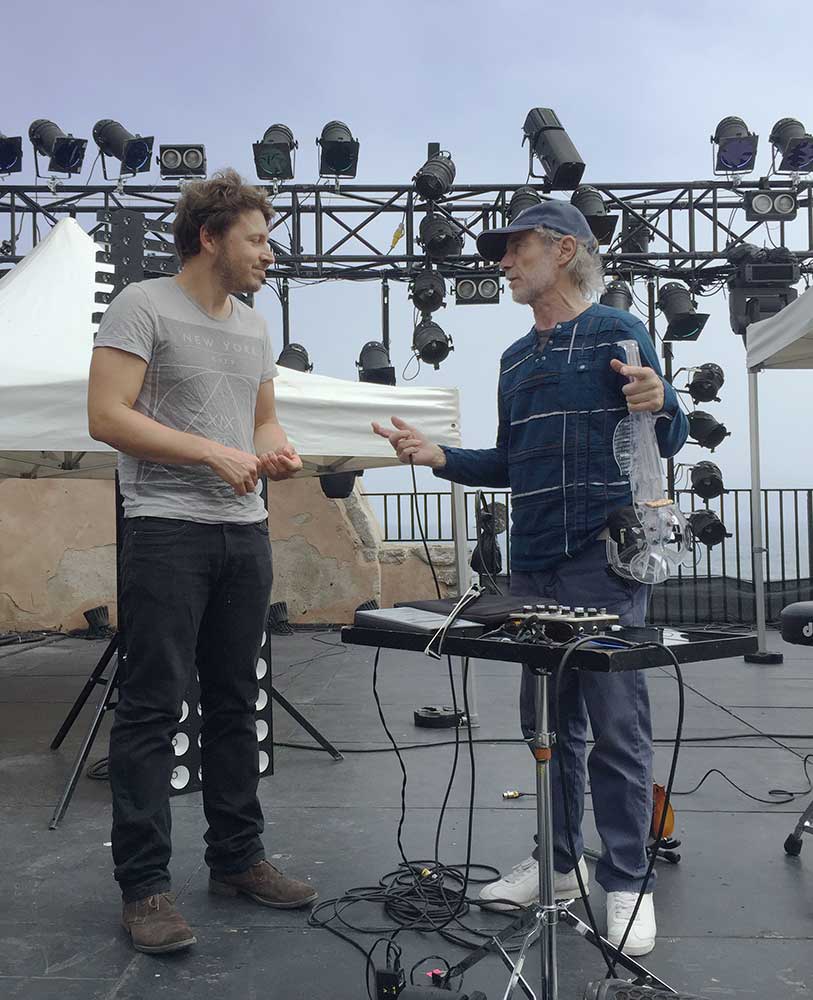
[…] for me it was important to develop a full and intense tone. I must say that my teacher at the Paris Conservatoire, Gabriel Bouillon, had a different technical ethos from that of the other French teachers. He was more in favour of Russian bowing technique and taught us to achieve a powerful sound while just playing one long note. It’s about the pressure you put on the frog and the way you hold the bow, and to me it seemed the perfect approach to playing modern jazz.
It is understandable that this Russian bowing technique helped him make the transition from classical to jazz playing. He then explains that it took him a long time to grasp the subtleties of bow playing and that it was his time in the United States that gave him new ideas to apply in order to improve his technique.
At the very beginning I might have been a little bit too regular and stiff, coming from Bach and playing so much Baroque repertoire. Trumpet player Dizzy Gillespie, when he heard me in America for the first time […] said that I was playing great but that it would help me to play country music. He was such a joker that I thought it was just another joke, because I was not at all into country music. It was only after I moved to America in 1973 and saw the country fiddler Doug Kershaw that I understood what he meant.
Here is a video from 1968 showing Jean-Luc Ponty, Dizzy Gillespie and Jimmy Smith at the Olympia Hall in Paris. Observe Jean-Luc Ponty’s bow movements in 1968, then compare them with the following video recorded in 2017 during his tour with Biréli Lagrène and Kyle Eastwood. You should notice a change in the attitude of his bowing 😉
Learn to control the pressure when changing the direction of the bow
Earlier we explained that the distribution of the bow’s weight is not uniform. Remember to adapt the pressure of the bow according to its position on the strings and especially when changing directions.
In the electric violin, during the change of direction, and since there is no sound box, one can perceive a slight loss of sound power. To mitigate this, add a little delay to cover the few milliseconds that are needed to change direction.
Another important point in managing pressure is to stay relaxed, flexible and not just use your arm. If you want to maintain your presence in a swing, gypsy, jazz or rock rhythm, you will have to be more dynamic than you would be in classical music. And this dynamism is acquired through speed and reactivity when managing the movements of your right hand. Your arm is far too long to react quickly. Use your hand, wrist and fingers to play fast and reduce your response time!
Reduce the noise produced by the bow
In electric violin playing, poorly controlled direction will result in increased bow noise. Electric violins generate what is known as bow noise. It is a very particular form of “buzzing” that is mixed with the amplified sound.
In fact, when first trying out an electric violin, violinists are often surprised to hear so clearly the noise produced by the bow rubbing on the strings. The sensors of an electric violin can pick up this noise and amplify it. On stage, you probably won’t notice it, but when practicing alone at home or in the studio, you will be able to hear it.
Once again, adjust the pressure your right hand exerts on the bow: less pressure will reduce the noise of the bow and will not affect the sound quality!
You can reduce the presence of the bow noise with an equalizer (EQ). First of all, analyze the frequency spectrum produced by your electric violin and you will be able to identify the frequencies in which the bow noise is found. Generally, the loudest bow noise can be found in the lower frequencies. Apply a high-pass filter; it will reduce the low frequencies and let the high ones through. Or work directly on your EQ by reducing the area where the annoying frequencies occur. This will limit the amount of bow noise. Other kinds of bow noises can be found at higher frequencies. They are very much determined by your playing style. You are free to limit them with an EQ, to find a pressure technique that will reduce them, etc.
This work is rather simple to do on a multi-effects processor. It can also be done with a good preamp, if it is capable of handling the frequencies of a violin. However, this is not always the case, and many budget preamps are limited to high, medium and low guitar frequencies. But this doesn’t exactly match the frequencies of the violin! So the result will not be perfect! You will eliminate those unwanted frequencies, but also some useful ones.
You should note that suppressing bow noises will be easier if you do it at the beginning of the effects chain.
Analyze the way Masters play 😉
When a violinist graduates from a classical conservatory, he or she won’t have all the necessary tools for jazz, rock or any other contemporary music style.
Observing the most renowned and famous instrumentalists will inevitably give you keys to improve your technique. This is done by analyzing concert videos that allow you to decipher each movement and its resulting sound. Also, by reading interviews, because as we have seen previously, some of the answers given by Jean-Luc Ponty on the progression of his bowing technique can give you ideas on the kind of work you can do.
Moreover, in this interview, Jean-Luc Ponty gives other important advice. He specifies that he was not only inspired by jazz violinists but that he was greatly inspired by the sound of trumpet players. To improve his technique, he also analyzed the sound of other instruments such as the trumpet or the saxophone. Reproducing the sound of another instrument is obviously not possible, but listening to it and being inspired by it to broaden your technical palette is a real asset.
In our last two String Talks podcasts with violinists Jonathan H. Warren and Matt Bell, the former said that he was inspired by the sound of saxophonists, and the latter by well-known rock guitarists!
Why violinists should play the mandolin?
Jean-Luc Ponty also mentioned that he does not limit himself to one style of music. He says that he improved a lot when he discovered country music. Do not overlook styles that do not appeal to you at first glance such as swing, bluegrass, funk, gypsy jazz and many others. Here below you can find country violinist Doug Kershaw, mentioned above by Jean-Luc Ponty. It’s easy to see why Dizzy Gillespie thought Jean-Luc Ponty was a bit stuffy on stage 🙂
Images and sources: The Strad, Jean-Luc Ponty, Laurent Bernadac, Eduardo Bortolotti, Jonathan H. Warren and Tracy Silverman

